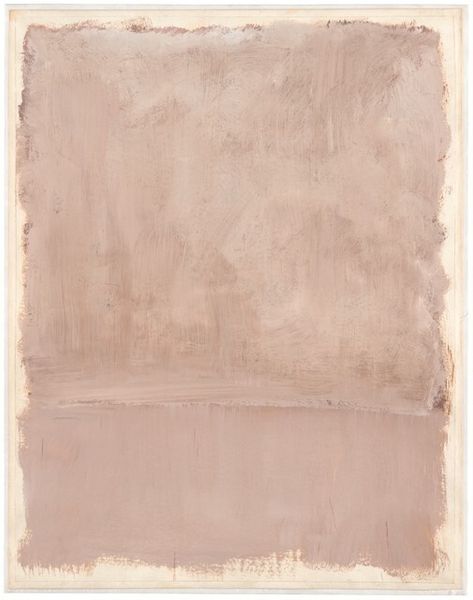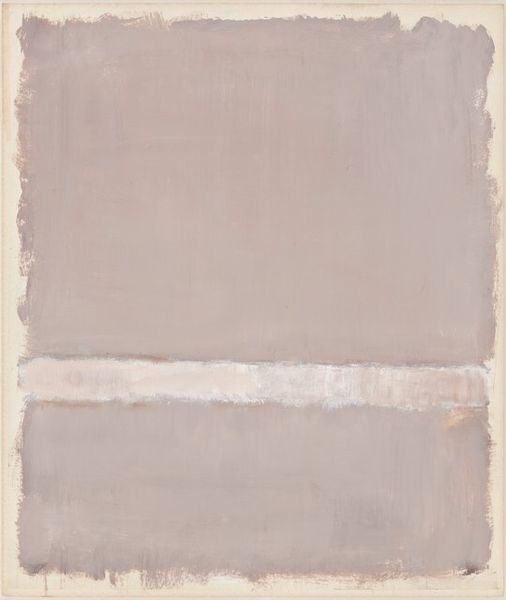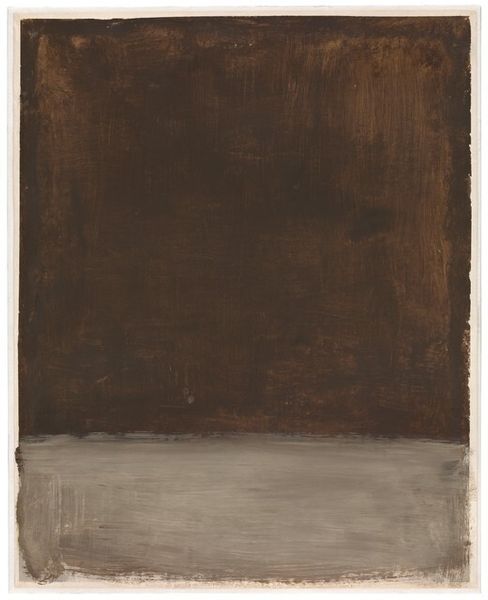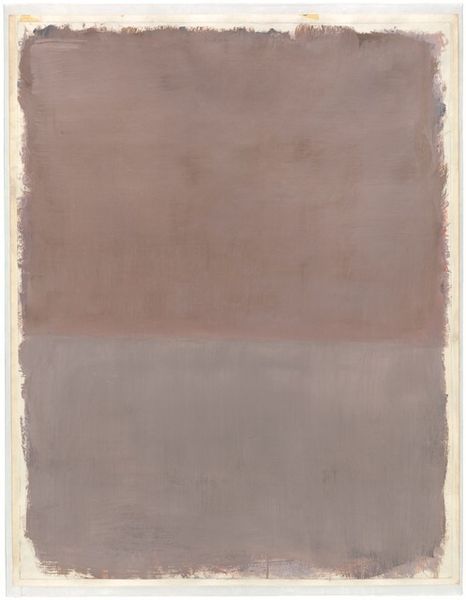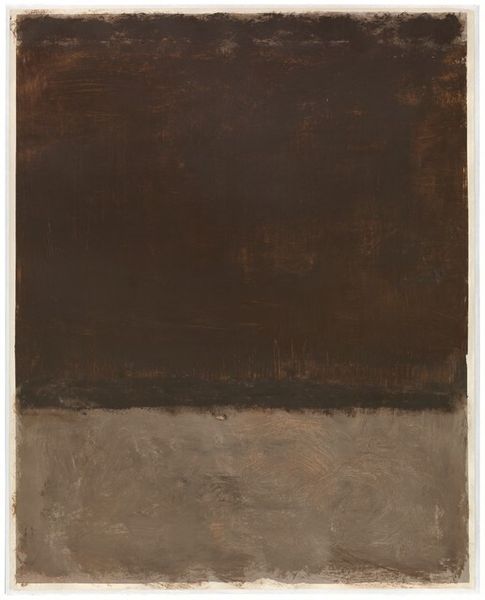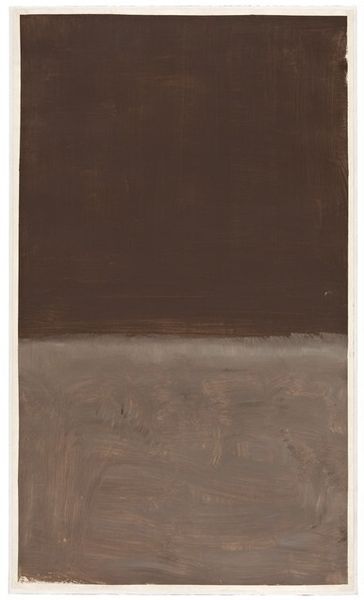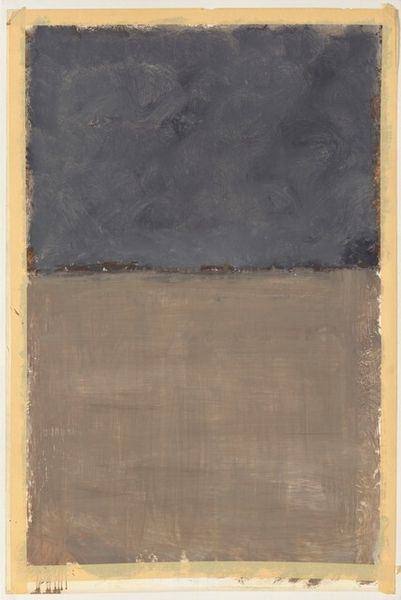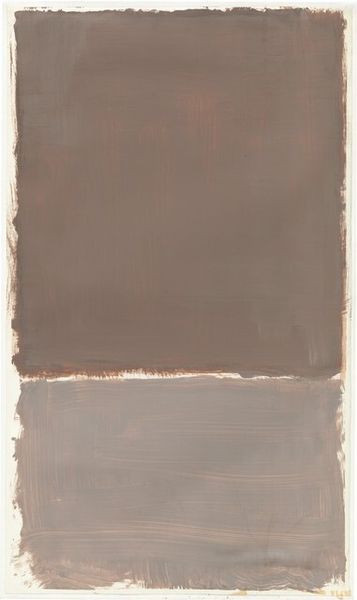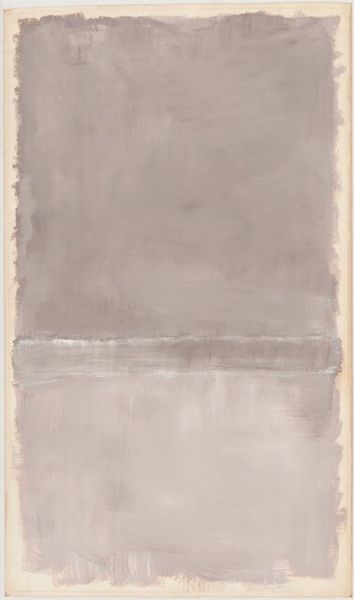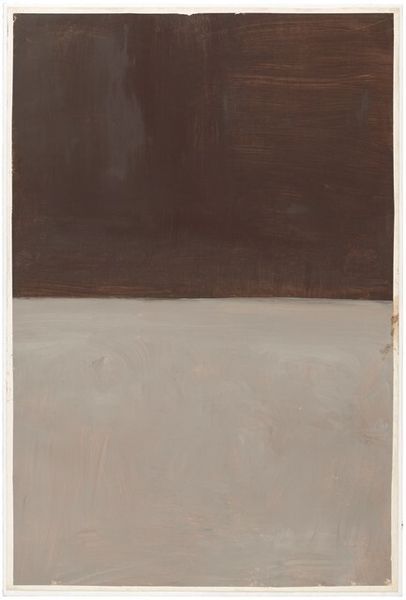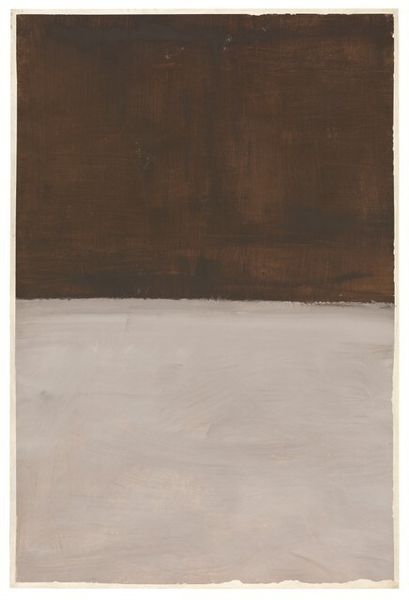
drawing, painting, oil-paint
#
abstract-expressionism
#
drawing
#
painting
#
oil-paint
#
abstraction
Copyright: National Gallery of Art: CC0 1.0
Curator: Here we have an untitled work by Mark Rothko, created in 1969. It’s an oil on canvas, embodying the essence of abstract expressionism that Rothko helped define. Editor: Well, immediately, I’m struck by the quietness of it. The muted tones, that subtle division – it almost feels like looking at a misty horizon. Curator: The "misty horizon" sensation is no accident; Rothko was profoundly interested in evoking a sense of the sublime through pure color and form. It’s important to note that by '69, his emotional state was very fragile, he had just started painting acrylics due to his failing health and also struggling with depression that will later lead to suicide, this painting reveals this turmoil in his life. Editor: It’s fascinating you say that. Formally, there's a clear horizontal division. The upper register is warmer, almost flesh-toned, while the lower area feels colder, grayer. This division reinforces a sense of weight, or perhaps even a kind of restrained sorrow. Curator: Exactly! But that separation wasn't merely about aesthetics. It was Rothko wrestling with the social upheavals of the era. He intended for his works to serve as profound, contemplative experiences. Viewing them became almost like a somber act. They were to invite the viewer to enter a mental space akin to a sanctuary, detached from all mundane distractions. Editor: You’re right, knowing more about its period provides richer dimensions. I am stuck on how Rothko used blocks to divide color as a language itself. It reminds me of Mondrian trying to capture dynamic spiritual realities, yet stripped down to their essence to trigger the emotions with a minimum of forms. Curator: It’s not about color alone. Consider the size, the way these paintings demanded space, mirroring a societal yearning for something spiritual. To view a painting in a contemporary exhibit, one is immediately presented with a work produced amid artistic change, yet holding fast to its own identity. Editor: Seeing these rectangles now, in relation to history, changes my perception. They symbolize not only aesthetics but a cultural response. This gives each color a different voice in time and in his own personal evolution. Curator: So, hopefully this short dialogue will open up other angles to appreciate and investigate more about this artwork. Editor: Definitely, reflecting on the context has brought a new profundity to its shapes for me.
Comments
No comments
Be the first to comment and join the conversation on the ultimate creative platform.
